Archive of Urological Research
Pre-Sacral Neurofibroma Mistaken for a Uterine Fibroid
Padmanabha Vijayan*
Cite this as
Vijayan P. Pre-Sacral Neurofibroma Mistaken for a Uterine Fibroid. Arch Urol Res. 2024;8(2):012-014. Available from: 10.17352/aur.000050Copyright
© 2024 Vijayan P. This is an open-access article distributed under the terms of the Creative Commons Attribution License, which permits unrestricted use, distribution, and reproduction in any medium, provided the original author and source are credited.A 33-year-old female patient who presented with urinary retention was found to have a large pelvic mass that was initially diagnosed as a pedunculated posterior wall uterine mass. Further evaluation revealed the mass to be a dumbbell-shaped neural tumor that extended into the sacral canal, corresponding to sacral segments 2, 3, and 4. The patient experienced no neurological deficits. The pelvic part of the tumor was eventually excised and the tumor portion in the sacral canal remained in place. The patient was followed up for 2 years and remained free of urological and neurological symptoms. Histological evaluation of the excised mass demonstrated that it was a neurofibroma.
Introduction
Neurofibromas in the sacral spinal region form about 1 to 5%. The most common area is the thoracic region followed by the cervical and lumbar regions. They are mostly benign, small, solitary, and less than 6 mm in diameter. Pelvic extraperitoneal space occupying nerve sheath tumors are very rare. They manifest as space-occupying lesions causing pressure on the adjacent organs like the urinary bladder, rectum, or uterus. They may be diagnosed as uterine fibroid, ovarian mass, or teratomas. Neurological manifestations are uncommon and are usually benign though malignancy cannot be ruled out in a small number of cases [1]. We report a case of a large, solitary, dumbbell-shaped neurofibroma whose major portion was in the pelvis with a small part inside the sacral canal connected through the eroded sacral neural foramina.
Case report
A 33-year-old female with a small build was a mother of three children (all of whom were delivered normally) and had undergone sterilization, presented with a lower abdominal swelling that was associated with difficulty in passing urine for more than 6 months. She had suffered from urine retention on three previous occasions. She had normal menstrual cycles and had experienced no weight loss. Upon examination, she weighed 30 kg, had normal blood pressure, and no co-morbid conditions.
Investigations
Blood Hb was 11 g, Urea was 20 mg, Creatinine was 1,1 mg, Fasting blood sugar was 100 mg, the Group ORh Positive Bleeding and clotting times were within normal limits, chest X-ray was normal, and ECG was within normal limits.
An ultrasound examination revealed a large mass (10 cm x 10 cm) arising from the pelvis in relation to the posterior wall of the uterus and occupying the presacral space with anterior displacement of the urinary bladder and rectum. The patient was examined by a gynecologist who diagnosed as a large pedunculated fibroid from the posterior uterine wall. At surgical exploration, the uterus was found to be normal with anterior displacement of the bladder and rectum. No surgical removal or biopsy of the fibroid mass was performed, and the opinion of a urologist was sought. Computed tomography (CT) and magnetic resonance imaging (MRI) studies were performed, showing a large presacral solid tumor with extension into the sacral canal involving the S2, S3, and S4 segments measuring 12 x 10.5 x 12 cm, with a few cystic areas and erosion of the sacral neural foramina and heterogeneously enhanced nerve sheath tumor diagnosed as a schwannoma (Figure 1). The patient did not experience any neurological deficit.
Because no neurosurgeon was available to excise the tumor, the urologist was approached to perform the procedure. Under spinal anesthesia supplemented with epidural anesthesia, as a precautionary measure, cystoscopy and bilateral ureteric stenting were performed with much difficulty because the urinary bladder had been displaced too far anteriorly. The previous surgical incision was re-opened, and the caecum, appendix, ascending colon, rector, and sigmoid colon were all mobilized and the iliac vessels were bilaterally exposed. The tumor was dissected free on all sides except posteriorly as the sacral extension of the tumor was too firm. The main presacral part of the tumor was extracted with the help of myomectomy screws applied to the anterior part of the tumor (Figure 2). The postoperative recovery was smooth, and the patient was discharged on the eighth day post-surgery. Histopathologic evaluation of the tumor showed moderate cellularity with fusiform and elongated cells with dark stained nuclei embedded in the collagenous matrix; the tumor was identified as a neurofibroma (Figure 3).
Two weeks after tumor excision, the patient underwent surgery to remove the ureteric stents. Her urinary symptoms resolved, and she remained symptom-free with no neurological deficit. Follow-up MRI evaluation two years later revealed the remaining portion of the tumor inside the sacral canal with no evidence of progression (Figures 4,5).
Discussion
Pelvic tumors usually present with symptoms of urinary obstruction often of the ureter and occasionally at the bladder outlet [2]. Nerve sheath tumors represent a very small proportion of primary retroperitoneal neoplasms. Benign nerve sheath tumors are defined as schwannomas (neurilemmomas) or neurofibromas [3]. The differential diagnoses include ovarian, cysts and tumors, sacral chondro and osteo-sarcomas, and mesenchymal masses like hemangiomas, myolipomas, dermoid cysts, and teratomas.
Neurofibromas account for 10% to 15% of all spinal tumors, with most occurring in the spinal canal. The thoracic region is the most common site of neurofibromas and only 1% to 5% is localized in the sacral region. Benign nerve sheath tumors in the pelvis are extremely rare. Most are small and solitary and rarely exceed 6 cm in area [1]; however, tumor size does not denote its aggressiveness or malignant potential.
Radiological investigation and differential diagnosis of retroperitoneal nerve sheath tumors are challenging. While CT is a useful diagnostic tool that can determine the size of the tumor and its association with the sacral plexus, CT imaging cannot differentiate a large neurofibroma from a neurofibrosarcoma based solely on changes to the bone [4]. MRI provides high-resolution images of soft tissues across multiple planes, which allow for preoperative differentiation of several types of spinal tumors [5]. Arteriography can be used to visualize blood supply to the tumor [6] that can distinguish benign neurofibromas, which are avascular, from schwannomas, which are hypervascular. Ultrasound-guided needle biopsy does not yield an adequate amount of tissue containing pleomorphic cells, which can be difficult to interpret, and the procedure may have complications, such as infection or hemorrhage [7].
Removal of nerve sheath tumors requires an intraperitoneal or extraperitoneal approach. Because malignant transformation is unlikely in patients without neurofibromatosis type 1, simple enucleation or even partial excision and nerve salvage has been advocated [4]. Pre-sacral nerve sheath tumors are usually evaluated by obstetricians and other clinicians [8], and diagnosis is often delayed. The use of MRI helps to delineate the unusual site and size of the tumor and is helpful in differential diagnosis and determining the appropriate surgical approach [5].
Conclusion
This is an unusual and interesting case where the patient presented with retention of Urine and was initially diagnosed to have been caused by a uterine mass clinically and suggested to be a pedunculated fibroid by sonographic evaluation. Surgical exploration by the gynecologist revealed the mass to be extra-uterine occupying the pre-sacral space. Further investigations confirmed the mass to be arising from the nerve sheath and extending through the eroded sacral neural foramina (S 2, 3, 4). The entire pelvic portion of the tumor was surgically removed by the urologist. The small intra-sacral part of the tumor was left behind to avoid any damage to the nerves. The patient had no neurological deficit before or after the surgical procedure. She was followed up for 2 years and the MRI study showed no progression of the tumor.
- Bhatia S, Khosla A, Dhir R, Banerji AK. Giant lumbosacral nerve sheath tumors. Surg Neurol. 1992;37:118-122. Available from: https://doi.org/10.1016/0090-3019(92)90187-r
- Agarwal M, Azapardi A, Mufti GR. Giant presacral neurofibroma. Postgrad Med J. 1992;68:55-56. Available from: https://doi.org/10.1136%2Fpgmj.68.795.55
- Miller PL, Tessler A, Alexander S, Pinck BD. Retroperitoneal neurilemmoma. Urology. 1978;6:619-623. Available from: https://doi.org/10.1016/0090-4295(78)90016-x
- Brady KA, McCarron JP, Vaughn ED, Javidian P. Benign schwannoma of the retroperitoneal space: case report. J Urol. 1993;150:179-181. Available from: https://doi.org/10.1016/s0022-5347(17)35429-0
- Kendra S, Perry J, Pickhardt MG, Menias CO, Bhalia S. Presacral masses: multimodality of a multidisciplinary space. Radiographics. 2013;33:1011-1022. Available from: https://doi.org/10.1148/rg.334115171
- Grnja V, Allen WE 3rd, Osborn DJ, Kier EL. Sacral neurofibrosarcoma: an angiographic evaluation. Case report. J Neurosurg. 1974;40(6):767-771. Available from: https://doi.org/10.3171/jns.1974.40.6.0767
- Feldenzer JA, McGauley JL, McGillicuddy JE. Sacral and presacral tumors: problems in diagnosis and management. Neurosurgery. 1989;25:884-891. Available from: https://pubmed.ncbi.nlm.nih.gov/2601818/
- Boujoual M, Hachi H, Merrouni MA, El Khannoussi B, Bougtab A. Presacral giant solitary neurofibroma: a rare case of pelvic mass in women. Pan Afr Med J. 2014;17:288. Available from: https://doi.org/10.11604/pamj.2014.17.288.3312
Article Alerts
Subscribe to our articles alerts and stay tuned.
 This work is licensed under a Creative Commons Attribution 4.0 International License.
This work is licensed under a Creative Commons Attribution 4.0 International License.
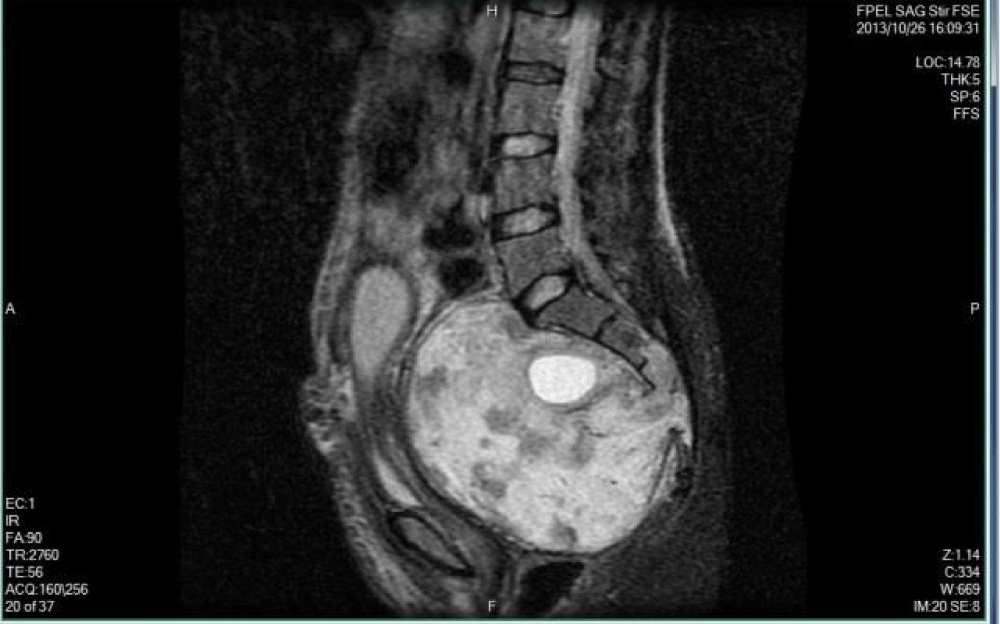
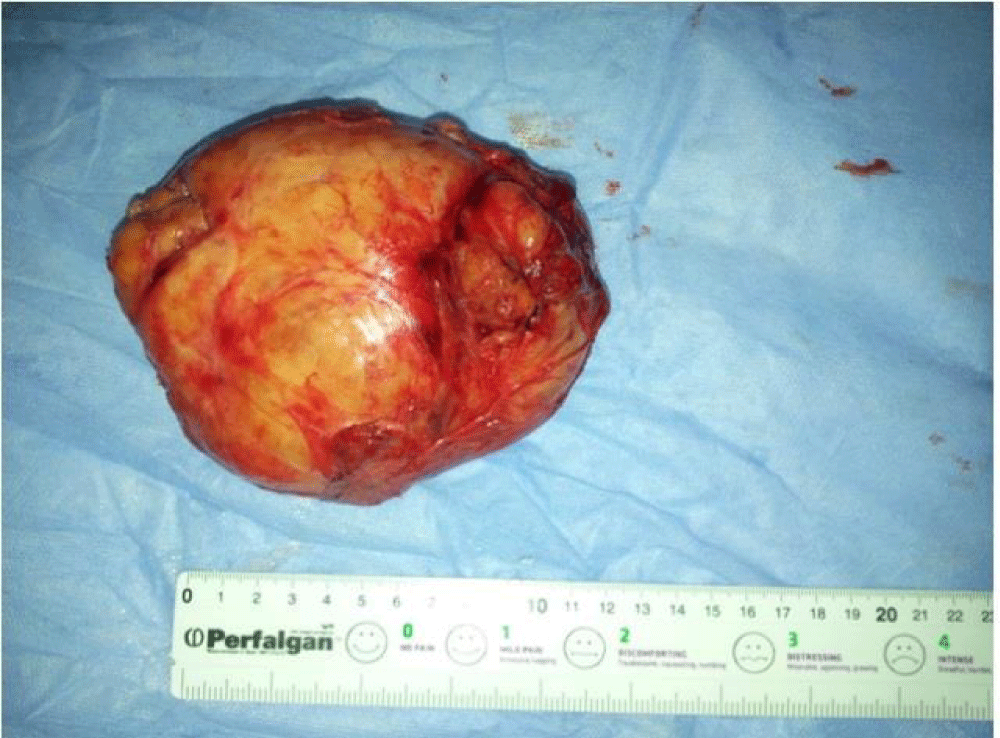
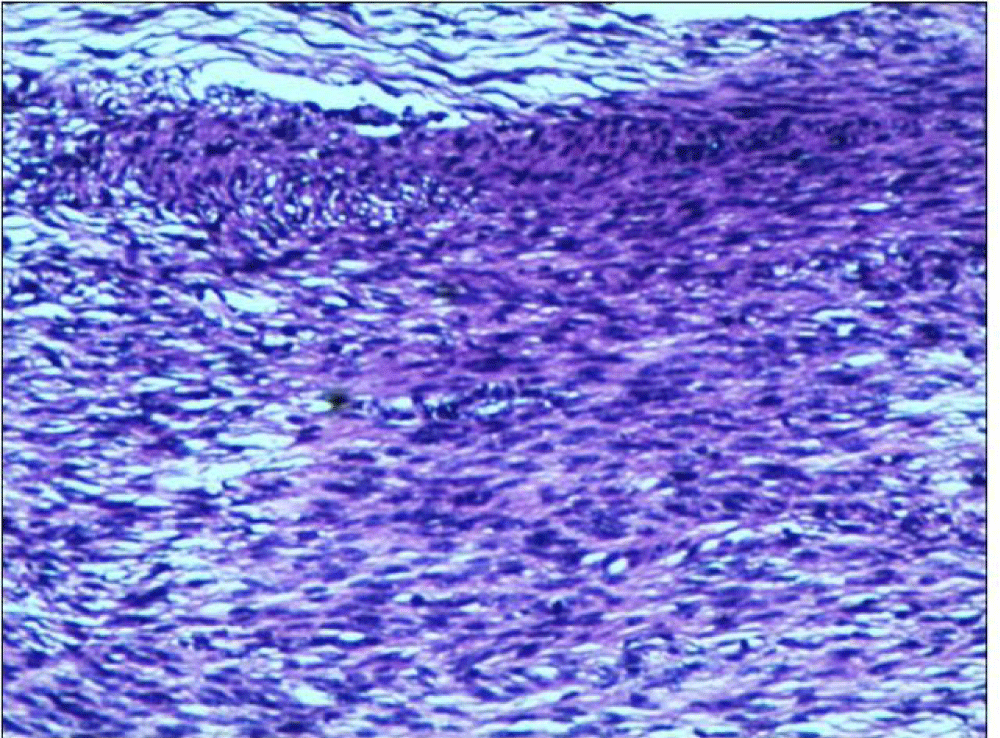
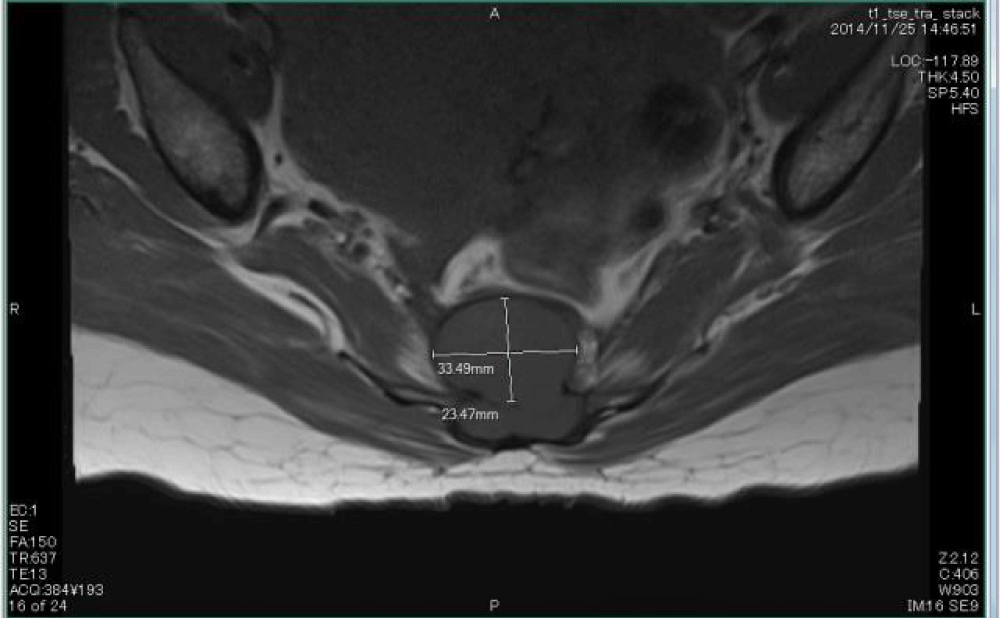
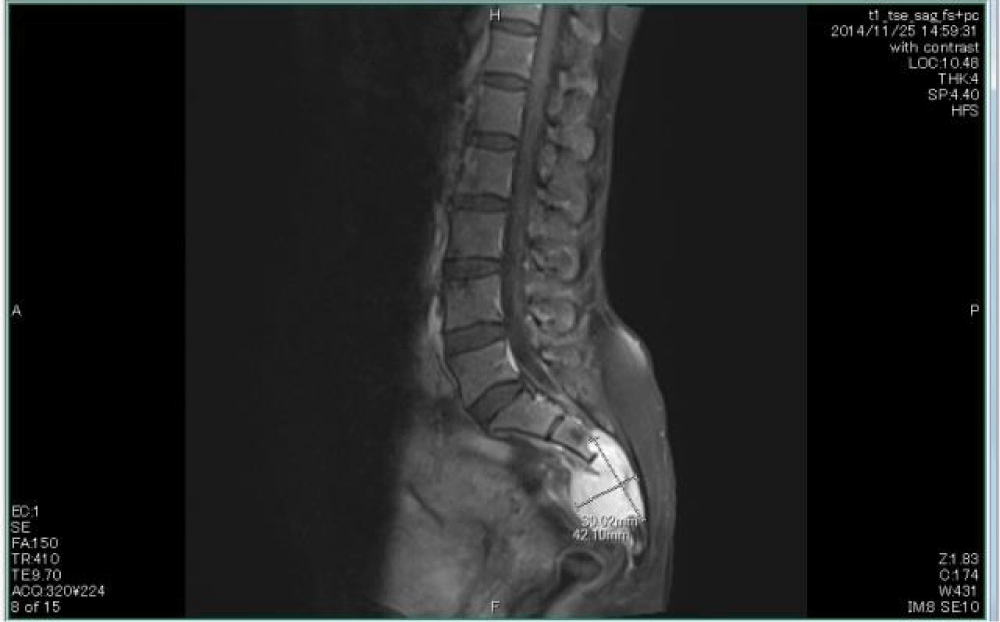


 Save to Mendeley
Save to Mendeley
